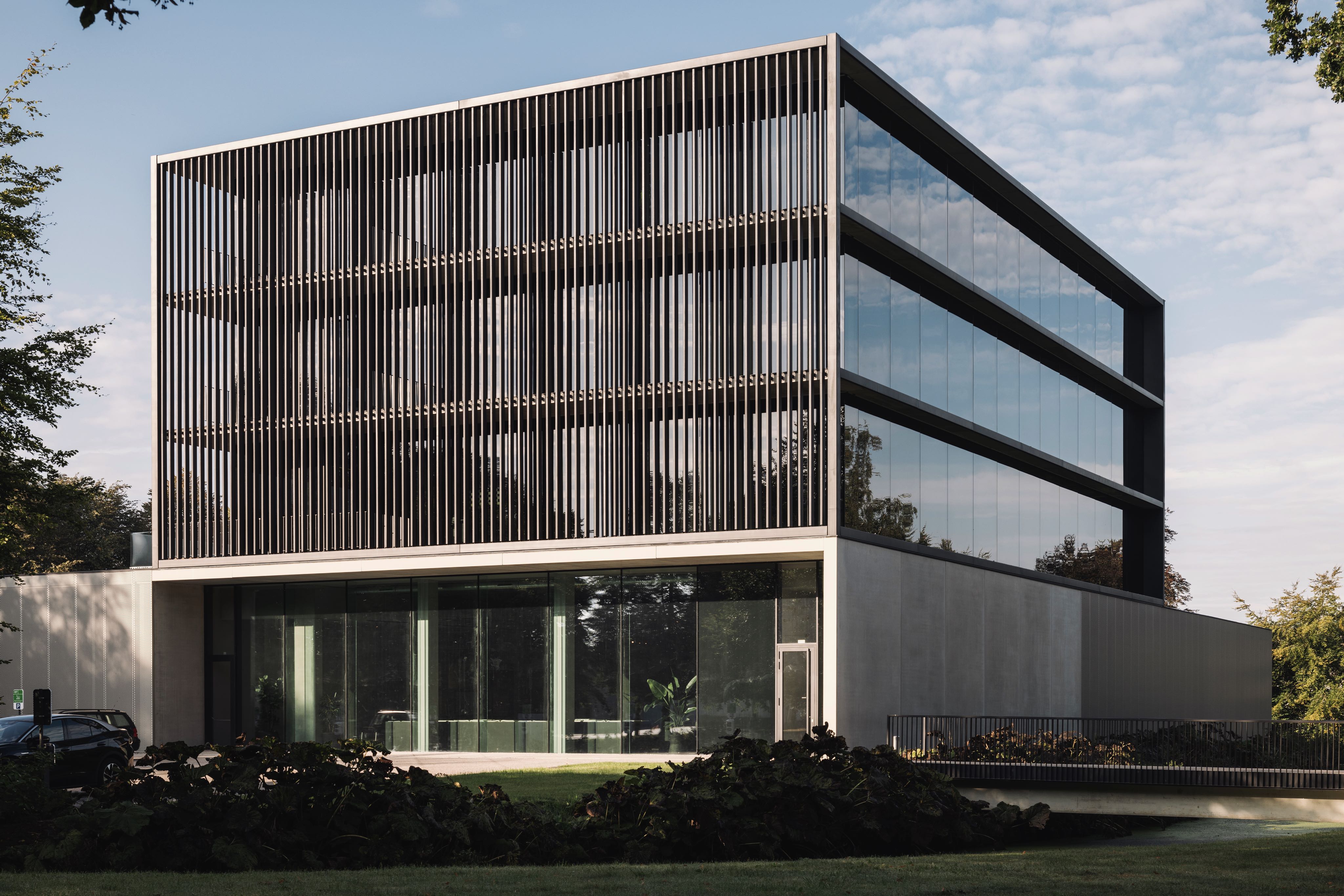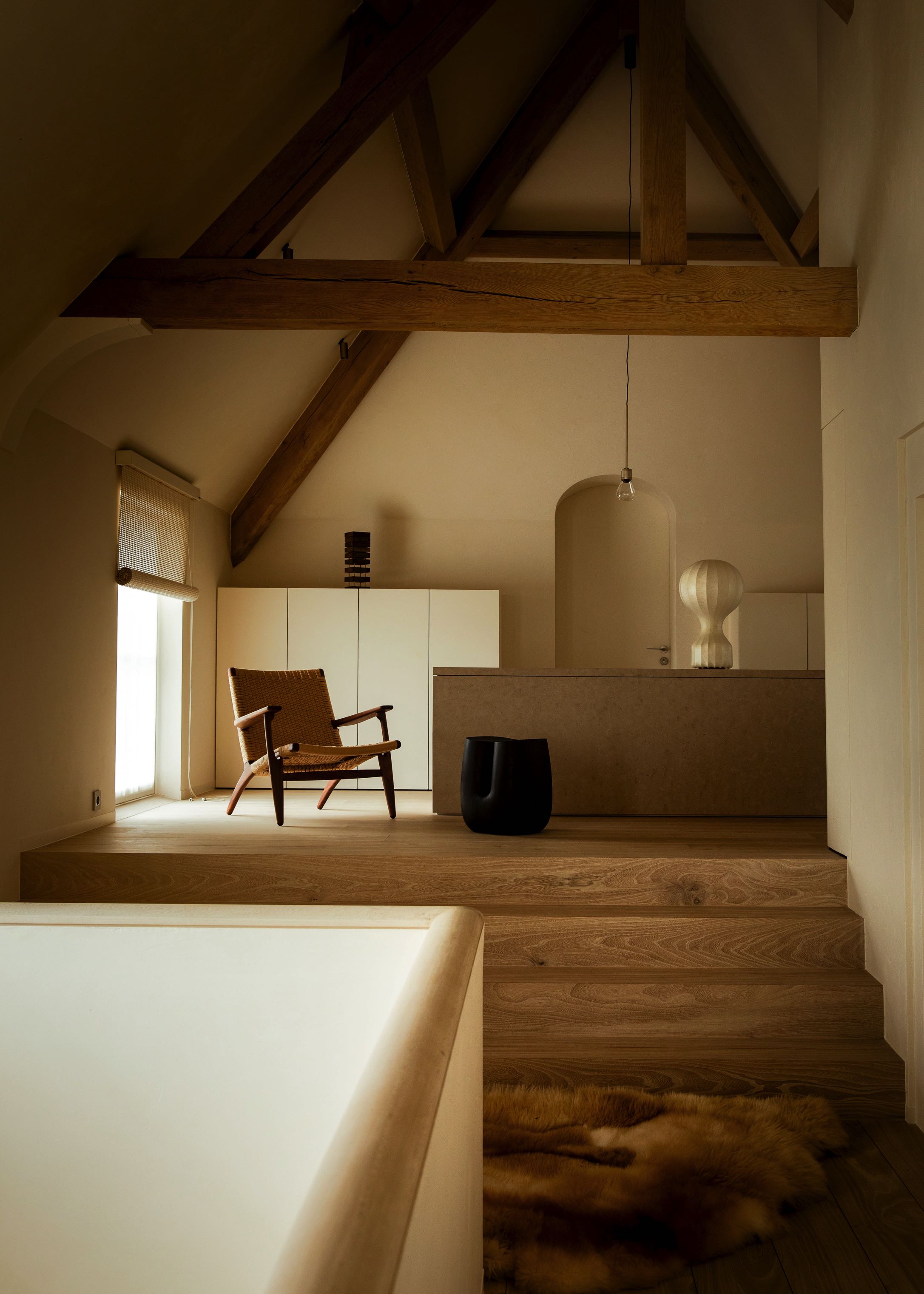Wood remains unique because it can be both understated and present. Slim slats that filter light softly contrast with floor-to-ceiling panels that embrace a room without overwhelming it. More and more architects are integrating wood not as cladding, but as a structural part of their design thinking. Architectural Digest notes a clear resurgence of wood-dominated interiors: dining rooms fully wrapped in timber, kitchens detailed from floor to ceiling, and sculptural wooden volumes that define entire spaces. Dark and richer tones are gaining ground because they add architectural depth, while matte oils and natural finishes preserve texture and authenticity.
In conversations with designers, the same observation returns: the qualities of wood reveal themselves fully only when you stand in the room. It brings warmth underfoot, softens acoustics, and makes a space feel more stable by regulating temperature and atmosphere in a natural way.
Those who specify wood choose a material that moves with the architecture rather than dominating it. The continuity of the grain, the precision of the joints, and attention to acoustic comfort define the standard of an interior designed to last. With Woodstoxx, architects gain access not only to high-quality species and finishes, but also to the expertise needed to anchor the material into the DNA of the design.
With Woodstoxx, architects not only gain access to high-quality wood types and finishes, but also to the expertise needed to embed the material in the DNA of the design.



